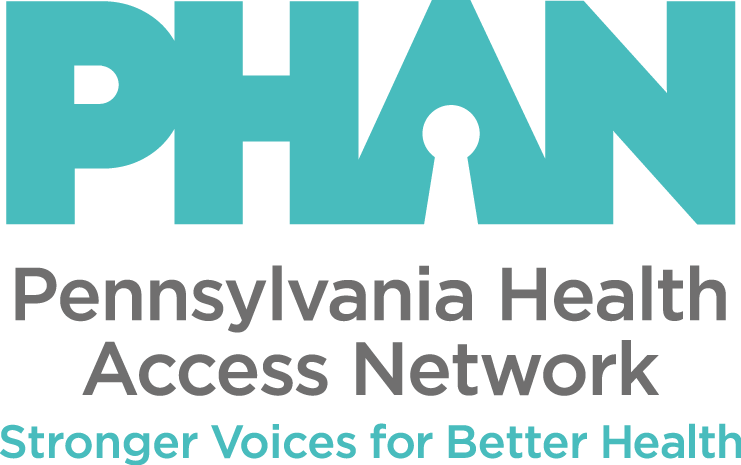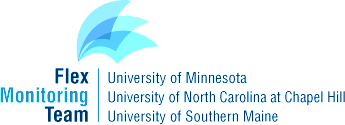The Ad Council, COVID Collaborative and rural organizations including the American Farm Bureau Federation, the Cooperative Extension System, the National Association of Farm Broadcasting and the National Association of Community Health Centers (NACHC) have collaborated to develop a series of public service announcements that highlight rural voices and stories involving COVID-19 in order to increase public confidence in vaccination. The summary discusses the importance of local perspectives to building community trust, as well as the impacts of the pandemic in rural areas.
Study Finds State Vaccination Lotteries Didn’t Work
None of the 19 states that implemented statewide COVID-19 vaccine lotteries this summer saw an increase in vaccination rates as a result of the incentive programs according to a study published in JAMA Health Forum. Compared with states that didn’t have vaccine lotteries, the study found that there was essentially “zero difference” in the vaccination rates of states that held vaccine lotteries and those that didn’t.
CMS Seeks to Transition ‘Vast Majority’ of Medicaid Beneficiaries to Accountable Care by 2030

The Centers for Medicare and Medicaid Services (CMS) announced a goal of driving all Medicare fee-for-service beneficiaries and most Medicaid beneficiaries into accountable care by 2030, according to a white paper outlining a “strategic refresh” at the CMS Innovation Center. Accountable care relationships might include advanced primary care, Accountable Care Organizations or other models that emphasize accountability for quality and total cost of care. Other strategic objectives outlined in the white paper include advancing health equity and affordability, spurring care innovations and partnering with stakeholders.
BeHeard BeHealthy in Pennsylvania

Creating healthy communities means much more than simply being able to see a doctor. To thrive, communities need safe, stable housing, access to nutritional food, reliable transportation, access to affordable treatments and much more. But the voices of communities – especially Black and Brown, rural and other underserved communities – are rarely heard in conversations at the state and local level that impact their health.
The new BeHeard BeHealthy PA initiative will create new ways for communities across Pennsylvania to participate in building healthier communities by making their voices heard through listening sessions, a new survey panel and advocating for community-driven priorities at the state and local levels. The Pennsylvania Health Access Network (PHAN) is collaborating with trusted and locally connected organizations across Pennsylvania to engage local communities and make their voices heard! PHAN is seeking community partners to assist. The role of each community partner is to facilitate community conversations, recruit members of the local community to join a new survey panel and identify community leaders to take part in statewide efforts to advance community driven policies at the state and local levels.
New HRSA Find a Health Center Video Released

The Health Resources and Services Administration (HRSA) released a new video, “Find a Health Center,” to increase awareness about health centers and help potential patients locate a health center near them.
The Association of Rurality and Breast Cancer Stage at Diagnosis
A new study by the WWAMI Rural Health Research Center, led by David Evans, MD, found that patients from rural areas have lower breast cancer screening rates than urban patients.
The researchers found that a greater proportion of rural patients received an initial breast cancer diagnosis at a late stage compared with urban patients and that patients living in remote small rural counties had the highest rate of late-stage breast cancer at diagnosis. Breast cancer survival is known to be worse for rural patients compared to urban, and late stage at diagnosis may be a contributing factor. These disparities are longstanding and suggest areas for further research, advocacy, policy changes, and patient education. Further study is needed to identify appropriate screening availability in rural areas and the burdens that travel presents for patients where screening is not available.
Read more about rural breast cancer screening and a companion study of rural colorectal cancer screening.
New Policy Brief on CAHs Addressing Community Social Needs

The Flex Monitoring Team has released a new policy brief summarizing characteristics of Critical Access Hospital (CAH) initiatives addressing the social needs of individuals in their communities. The brief, How Critical Access Hospitals Are Addressing the Social Needs of Rural Populations, highlights the importance of partnerships in rural communities, as well as the need for support of hospital leadership, ample funding, and dedicated staff to make these programs effective.
In tandem with the previously published report, Rural Initiatives Addressing Community Social Needs, this work can provide additional knowledge for developing population health initiatives in rural areas.
CMS Releases Updated Fact Sheet on Current Medicaid and CHIP Health Coverage Options Available for Afghan Evacuees
The Centers for Medicare & Medicaid Services (CMS) released an updated fact sheet, based on recent legislative changes, to help states and advocacy organizations understand what health coverage options are available to Afghan evacuees.
Afghan evacuees arriving in the United States will be eligible for health coverage through Medicaid, the Children’s Health Insurance Program (CHIP), the Health Insurance Marketplace, or refugee medical assistance (RMA or other health coverage provided by the Office of Refugee Resettlement (ORR)). RMA is provided through the Administration for Children and Families (ACF) and administered in most cases by state Medicaid programs. Eligibility for each coverage program depends on the state where an evacuee is residing and the eligibility criteria for the respective program.
Learn more here: https://medicaid.gov/medicaid/eligibility/downloads/hlth-cov-option-afghan-evac-fact-sheet.pdf
Pennsylvania Trauma Systems Foundation Releases List of Current Accredited Trauma Centers in the State
In Pennsylvania, there are four levels of trauma centers. Level I trauma centers provide the highest degree of resources with a full spectrum of specialists and must have trauma research and surgical residency programs. Level II trauma centers require the same high level of care but do not require research and residency programs. Level III trauma centers are smaller community hospitals that do not require neurosurgeons and focus on stabilizing severe trauma patients prior to transport to a higher-level trauma center. They may admit patients with mild and moderate injuries. Level IV trauma centers provide enhanced care to injured patients within the emergency department and focus on stabilization and quick transfer to a higher-level trauma center. They may admit mildly injured patients.
Each trauma center regardless of its level is an integral component of the emergency medical services (EMS) system. The EMS system assures appropriate patient care management from the time of injury to treatment at a local hospital or trauma center through the rehabilitative phase of care. Trauma centers are hospitals with resources immediately available to provide optimal care and reduce the likelihood of death or disability to injured patients. Accredited trauma centers must be continuously prepared to treat the most serious life threatening and disabling injuries. They are not intended to replace the traditional hospital and its emergency department for minor injuries.
Effective November 1, 2021, there are 49 accredited trauma centers in Pennsylvania.
Combined Adult Level I /Pediatric Level I Trauma Centers
- Hershey – PennState Health Milton S. Hershey Medical Center/ PennState Health Children’s Hospital
Combined Adult Level I/Pediatric Level II Trauma Centers
- Allentown – Lehigh Valley Health Network – Lehigh Valley Hospital Cedar Crest/ Lehigh Valley Reilly Children’s Hospital
- Danville – Geisinger Medical Center/ Geisinger Janet Weis Children’s Hospital
Adult Level I Trauma Centers
- Bethlehem – St. Luke’s University Health Network – St. Luke’s University Hospital Bethlehem
- Johnstown – Conemaugh Health System – Conemaugh Memorial Medical Center
- Lancaster – Penn Medicine Lancaster General Health – Lancaster General Hospital
- Philadelphia – Einstein Healthcare Network – Einstein Medical Center Philadelphia
- Philadelphia – Temple Health – Temple University Hospital
- Philadelphia – Jefferson Health – Thomas Jefferson University Hospital
- Philadelphia – Penn Medicine – Penn Presbyterian Medical Center
- Pittsburgh – Allegheny Health Network – Allegheny General Hospital
- Pittsburgh – University of Pittsburgh Medical Center – Mercy
- Pittsburgh – University of Pittsburgh Medical Center – Presbyterian
- West Reading – Tower Health – Reading Hospital
- York – WellSpan Health – WellSpan York Hospital
Pediatric Level I Trauma Centers
- Philadelphia – Tower Health – St. Christopher’s Hospital for Children
- Philadelphia – The Children’s Hospital of Philadelphia
- Pittsburgh – University of Pittsburgh Medical Center – Children’s Hospital of Pittsburgh
Adult Level II Trauma Centers
- Abington – Jefferson Health – Abington Hospital
- Altoona – University of Pittsburgh Medical Center – Altoona
- Bethlehem – Lehigh Valley Health Network – Lehigh Valley Hospital – Muhlenberg
- Camp Hill – PennState Health Holy Spirit Medical Center
- Easton – St. Luke’s University Health Network – St. Luke’s Hospital Anderson Campus
- Erie – University of Pittsburgh Medical Center – Hamot
- Langhorne – Trinity Health Mid-Atlantic – St. Mary Medical Center
- Monroeville – Allegheny Health Network – Forbes Hospital
- Paoli – Main Line Health – Paoli Hospital Main Line
- Philadelphia – Jefferson Health – Jefferson Torresdale Hospital
- Sayre – Guthrie Robert Packer Hospital
- Scranton – Geisinger Community Medical Center
- Sellersville – Grand View Health – Grand View Hospital
- Upland – Crozer-Keystone Health System – Crozer-Chester Medical Center
- Wilkes-Barre – Geisinger Wyoming Valley Medical Center
- Williamsport – University of Pittsburgh Medical Center – Williamsport
- Wynnewood – Main Line Health – Lankenau Medical Center Main Line
Level III Trauma Centers
- East Stroudsburg – Lehigh Valley Health Network – Lehigh Valley Hospital Pocono
Level IV Trauma Centers
- Coaldale – St. Luke’s University Health Network – St. Luke’s Hospital Miners Campus
- Grove City – Allegheny Health Network – Grove City Hospital
- Hastings – Conemaugh Miners Medical Center
- Hazleton – Lehigh Valley Health Network – Lehigh Valley Hospital Hazleton
- Honesdale – Wayne Memorial Hospital
- Jersey Shore – Geisinger Jersey Shore Hospital (Effective 11/1/21)
- Lehighton – St. Luke’s University Health Network – St. Luke’s Hospital – Lehighton Campus (Effective 11/1/21)
- Lewistown – Geisinger Lewistown Hospital (Effective 11/1/21)
- McConnellsburg – Fulton County Medical Center
- Orwigsburg – Geisinger – St. Luke’s Hospital (Effective 11/1/21)
- Quakertown – St. Luke’s University Health Network – St. Luke’s Hospital Upper Bucks Campus
- Stroudsburg – St. Luke’s University Health Network – St. Luke’s Hospital Monroe Campus
- Troy – Guthrie Troy Community Hospital
The Pennsylvania Trauma Systems Foundation (PTSF) is a non-profit corporation recognized by the Emergency Medical Services Act (Act 1985-45). The PTSF is the organization responsible for accrediting trauma centers in the Commonwealth of Pennsylvania.
A comprehensive list of the Commonwealth’s trauma centers is located at www.ptsf.org.
Racial & Ethnic Disparities in Health & Healthcare Executive Brief
ECRI and the Institute for Safe Medication Practices (ISMP), a Patient Safety Organization (PSO), recognizing the ubiquity of racial and ethnic disparities in health and health care and their far-reaching consequences, will be using data they receive, detailed research and expert evaluation for their upcoming 2022 Deep Dive. It will identify why addressing racial and ethnic disparities is important and what you can do to reduce them. They have also released Deep Dive: Racial and Ethnic Disparities in Health and Healthcare Executive Brief, key strategies for understanding, detecting, and reducing disparities that impact every area of health care.
